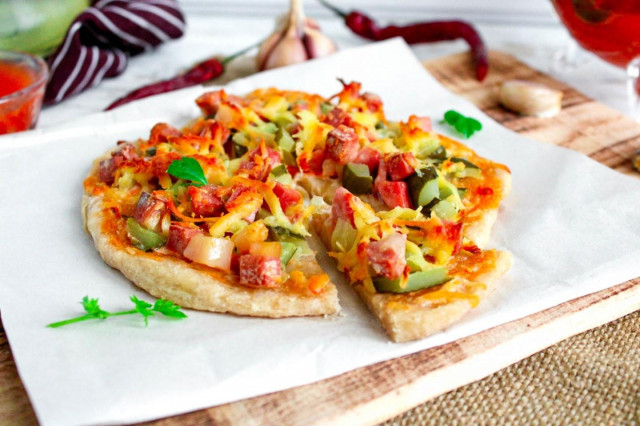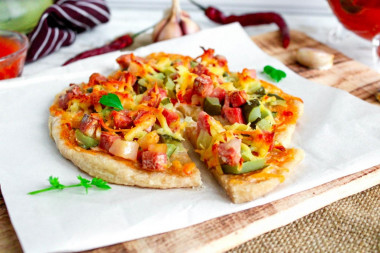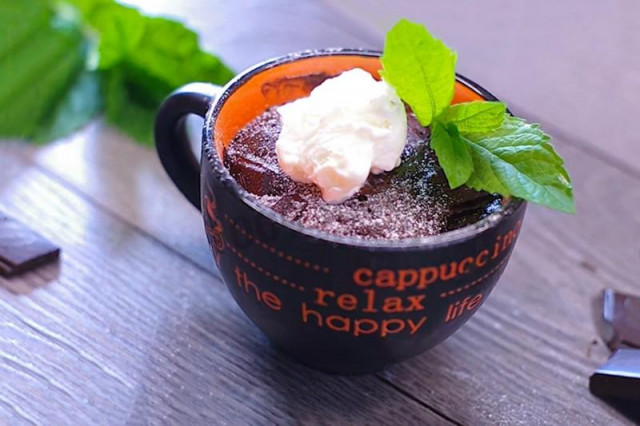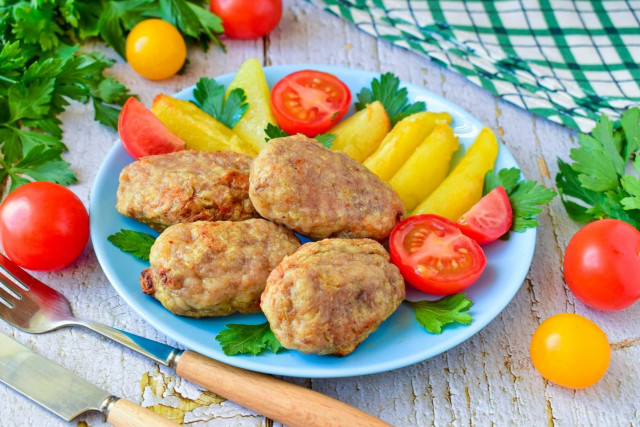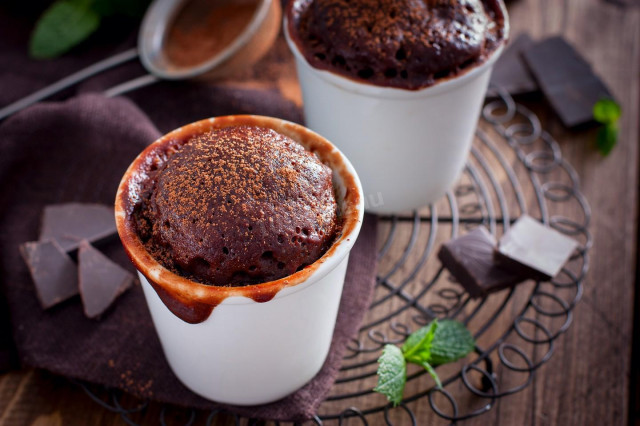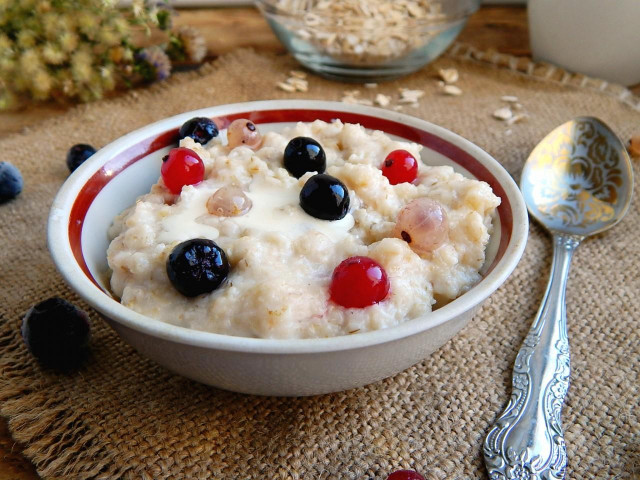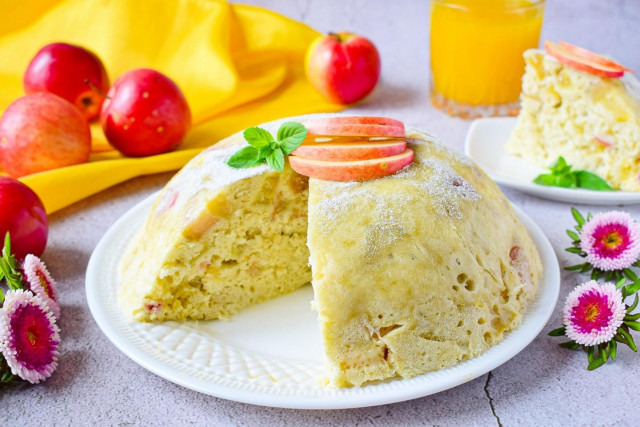Composition / ingredients
Step-by-step cooking
Step 1:
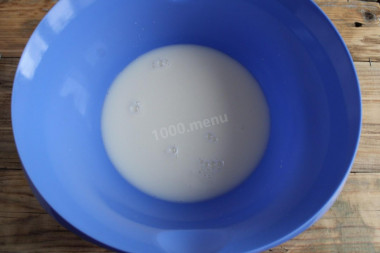
How to make pizza in the microwave in 5 minutes? First of all, prepare the dough. How to make dough? In a deep bowl, pour warm milk (at room temperature or heated to 30 degrees), add a pinch of salt, sugar (to balance the taste), pour vegetable oil (it is better to take refined, odorless). Mix the ingredients.
Step 2:
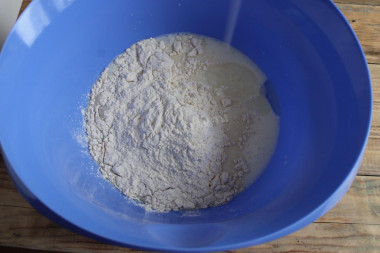
Sift the wheat flour and pour it into a bowl with liquid. It is important to sift the flour to saturate it with oxygen. Then the baking will turn out to be airy and will rise well when baking.
Step 3:
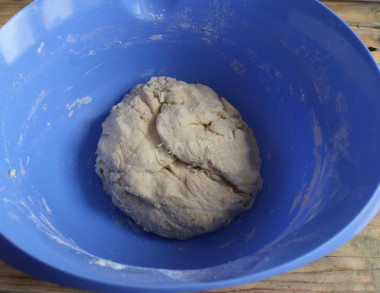
Knead the elastic dough, it turns out to be slightly sticky in consistency. Wrap it in plastic wrap or a bag and put it in the refrigerator for half an hour. If you have little time, then leave the dough for 5 minutes at room temperature. "The dough that has been laid out" is much more convenient to work with, it is softer and more elastic.
Step 4:
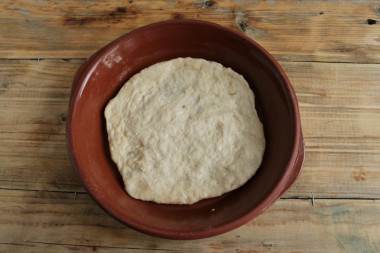
Then put the dough on a floured work surface and roll it out into a thin layer according to the size of a pizza baking dish. The pizza baking dish should be made of a material that is suitable for a microwave oven (glass or ceramic refractory). Be sure to lubricate the bottom of the mold with oil. Put the dough into the mold.
Step 5:
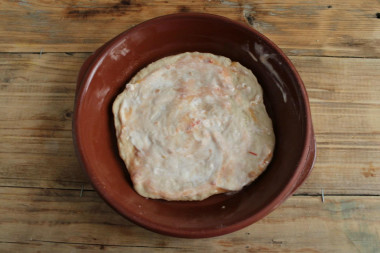
Mix mayonnaise with tomato paste in a separate bowl (I used homemade tomato sauce), spread the pizza base with the prepared sauce.
Step 6:
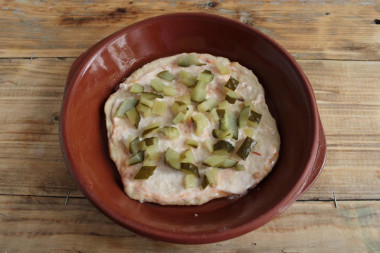
Prepare the filling. How to make the filling? Cut the pickled cucumbers into small cubes or strips, put them on the dough. Instead of cucumbers, you can use olives or olives. For piquancy and sharpness, you can use onions, but during the frying of pizza, it will not have time to cook well and will crunch, so it's better to put it a little in vegetable oil in a frying pan.
Step 7:
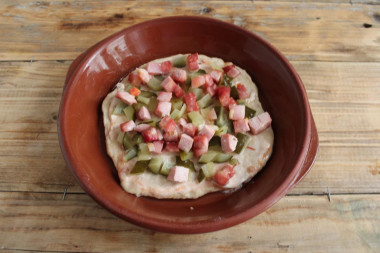
You can use any sausage: boiled, smoked, semi-smoked or sausages. Cut the sausage into thin strips or cubes. Sprinkle the pizza with sliced sausage.
Step 8:
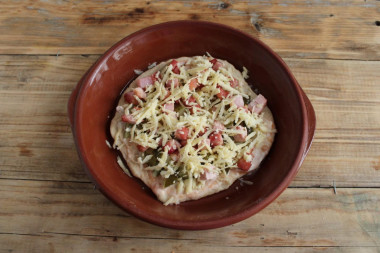
Any cheese is suitable for this dish — hard, semi-hard, soft, like mozzarella. The main thing is that it is tasty, high-quality, without milk fat substitutes and melts well. Grate the cheese and sprinkle it on top of the pizza base.
Step 9:
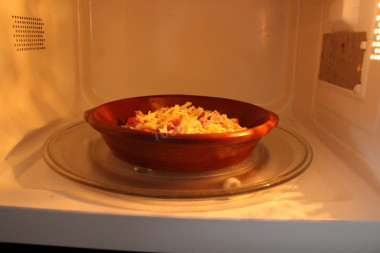
Send the pizza to the microwave, setting the maximum power and time to 5 minutes. After the signal indicating the readiness of the dish sounds, check the readiness of the pizza. The cheese should melt completely. If necessary, and to acquire the ruddiness of the pizza, you can put it in the microwave for another 5 minutes.
Step 10:
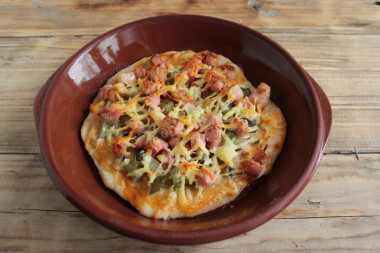
The pizza is ready. Let it cool down a little, remove from the mold and serve to the table. Bon appetit!
Be prepared for the fact that you may need more or less flour than indicated in the recipe. Focus not on the amount of flour, but on the desired consistency of the dough. To avoid mistakes, read about flour and its properties!
Keep in mind that microwaves don't work the same way. The cooking time and recommended power may differ from those stated in the recipe. Read the instructions for your device and take into account the features of your equipment.
Baked goods cooked in the microwave, always will differ in taste and structure of the dough from the one that was made in the oven or slow cooker. It doesn't mean she's bad/good - she's just OTHER . The crumb of a cupcake, pie, casserole and so on will be unusual and it is quite possible that you will not like it. If you have doubts about the taste of dough dishes in the microwave, it is better not to cook them!
Calorie content of the products possible in the dish
- Whole cow's milk - 68 kcal/100g
- Milk 3.5% fat content - 64 kcal/100g
- Milk 3.2% fat content - 60 kcal/100g
- Milk 1.5% fat content - 47 kcal/100g
- Concentrated milk 7.5% fat content - 140 kcal/100g
- Milk 2.5% fat content - 54 kcal/100g
- Dutch cheese - 352 kcal/100g
- Swiss cheese - 335 kcal/100g
- Russian cheese - 366 kcal/100g
- Kostroma cheese - 345 kcal/100g
- Yaroslavsky cheese - 361 kcal/100g
- Altai cheese 50% fat content - 356 kcal/100g
- Soviet cheese - 400 kcal/100g
- Cheese "steppe" - 362 kcal/100g
- Uglich cheese - 347 kcal/100g
- Poshekhonsky cheese - 350 kcal/100g
- Lambert cheese - 377 kcal/100g
- Appnzeller cheese with 50% fat content - 400 kcal/100g
- Chester cheese with 50% fat content - 363 kcal/100g
- Edamer cheese with 40% fat content - 340 kcal/100g
- Cheese with mushrooms of 50% fat content - 395 kcal/100g
- Emmental cheese with 45% fat content - 420 kcal/100g
- Gouda cheese with 45% fat content - 356 kcal/100g
- Aiadeus cheese - 364 kcal/100g
- Dom blanc cheese (semi-hard) - 360 kcal/100g
- Lo spalmino cheese - 61 kcal/100g
- Cheese "etorki" (sheep, hard) - 401 kcal/100g
- White cheese - 100 kcal/100g
- Fat yellow cheese - 260 kcal/100g
- Altai cheese - 355 kcal/100g
- Kaunas cheese - 355 kcal/100g
- Latvian cheese - 316 kcal/100g
- Limburger cheese - 327 kcal/100g
- Lithuanian cheese - 250 kcal/100g
- Lake cheese - 350 kcal/100g
- Gruyere cheese - 396 kcal/100g
- Granulated sugar - 398 kcal/100g
- Sugar - 398 kcal/100g
- Salad mayonnaise of 50% fat content - 502 kcal/100g
- Light mayonnaise - 260 kcal/100g
- Provencal Mayonnaise - 624 kcal/100g
- Provencal mayonnaise - 627 kcal/100g
- Table mayonnaise - 627 kcal/100g
- Vegetable oil - 873 kcal/100g
- Salt - 0 kcal/100g
- Semi-smoked sausage "Krakow" - 466 kcal/100g
- Semi-smoked sausage "Moscow" - 406 kcal/100g
- Wheat flour - 325 kcal/100g
- Pickled cucumbers - 16 kcal/100g
- Hot tomato sauce - 99 kcal/100g

